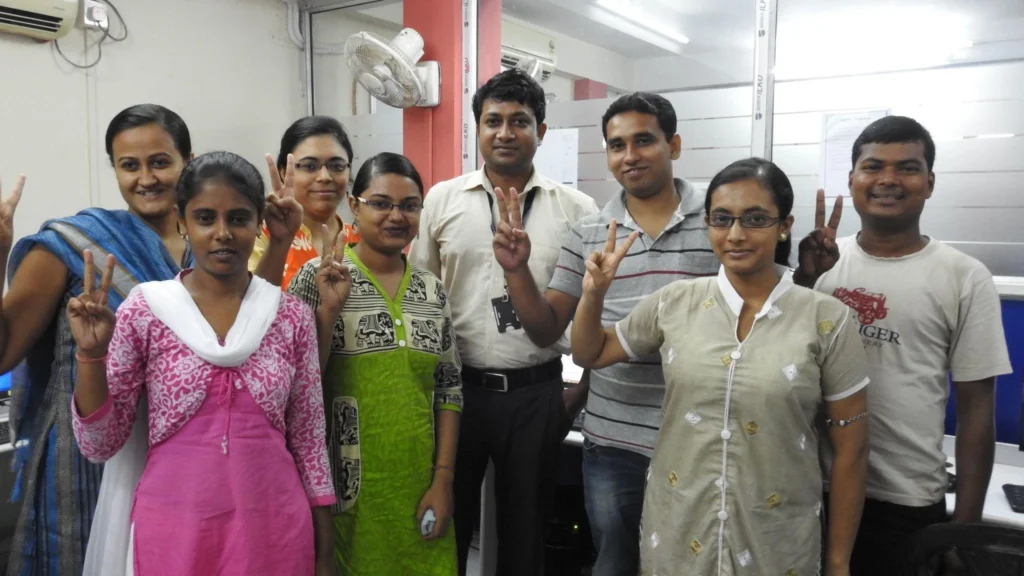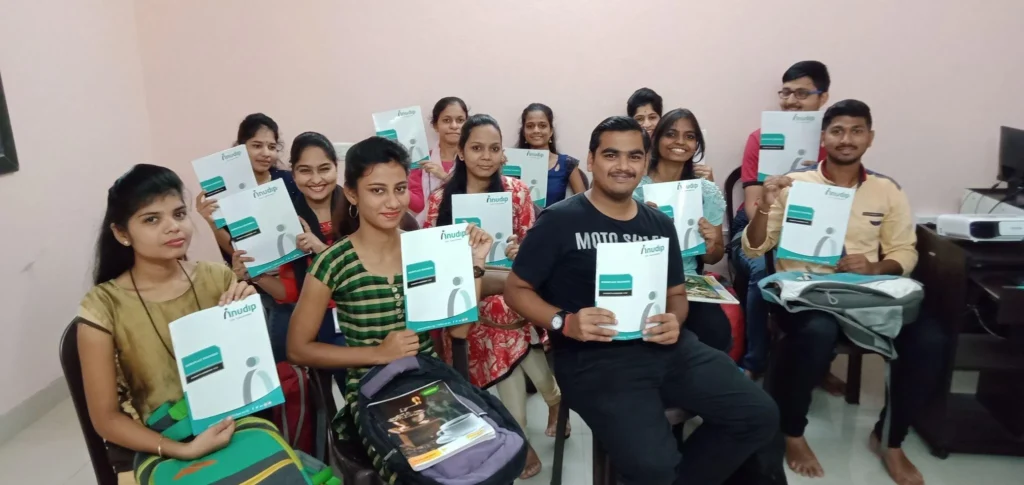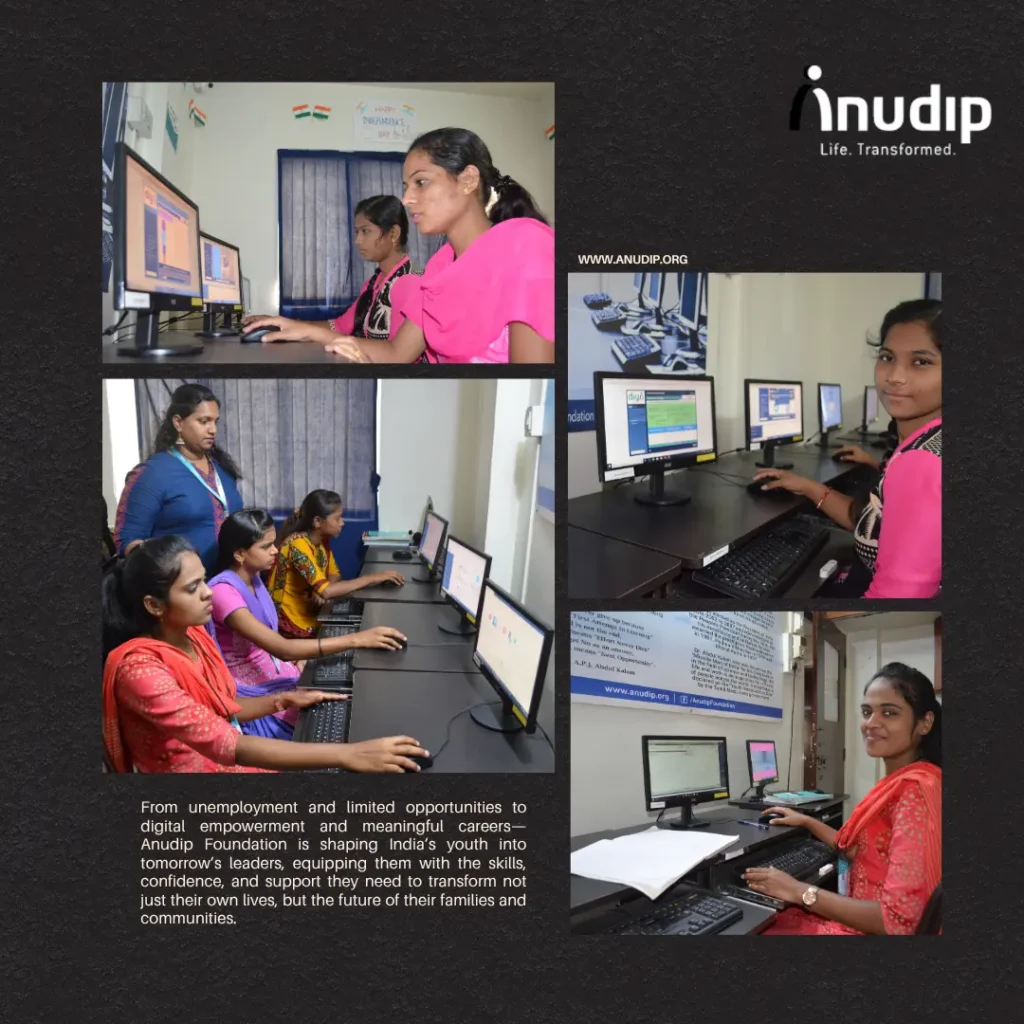Facing the Future: Challenges for Today’s Youth and Solutions Ahead
The youth of India are a powerful agent of change. The country is home to over a billion people, all of whom are under 35 years of age, and their presence and contributions will decide India’s future. Youth are also optimists. Yet, they are battling huge challenges that have the potential to prevent them from unleashing their full potential.
Anudip Foundation believes every youth should have an opportunity. We recognize that, provided they have a safety net with respect to their concerns, they can elevate themselves beyond their current challenges. Our work is about changing the youth challenges into opportunities. We assist youth by developing the skills that can translate into jobs. In fact, our programming is developing a new generation of leaders who will begin to build a better and stronger India for all.
What are the biggest challenges facing youth today?
Today’s youth face challenging problems. Many of them are struggling to secure employment. These young people have inadequate skills. These young people are under great stress. Moreover, these young people face unique challenges compared to their peers. So, what is it that holds these youth back?
1. The Problem of Jobs
Unemployment is a big problem for young people. The problem of the unemployment rate was not as serious for young people recently, according to the Periodic Labour Force Survey (PLFS) of August 2025. Even though the unemployment rate for April 2023 was somewhat improved overall, it is still a concern for youth. There are many college graduates and educated youth with their skill sets who are not going to find any jobs. Many jobs do not even exist for them. This standard gap between education and employment exists because of the significant difference between what is taught in school compared to what different companies require for jobs.
2. The Digital Divide
Many rural areas of India are untouched and unconnected. Rural people do not have access to computers or the internet. In 2025, a Ministry of Education report revealed that approximately 51% of Indian schools have a working computer and similarly, only slightly more than half have internet access. Millions of young people are unable to learn digital skills necessary for success in the modern world, and thus are excluded from many jobs and opportunities. This is a very real issue.
3. The Lack of Skills
Simply having a degree is not enough. Young people need to be able to access practical skills, such as software use and communication. Soft skills are important. Unfortunately, many skills training programs have not been developed to teach soft skills. Rather, college graduates feel unprepared for the job market and enter it with limited skills to be competitive.
4. The Difference Between Life in a City and in a Small Village.
Living in a city is a very different experience from living in a small village. Young people in villages have limited choices. Fewer jobs are available. There are fewer opportunities for training. Young people in villages have limited access to information. They often have a family that is dependent on them to work on the farm or be at home. These are real barriers to their choices. Consequently, many young people choose to leave their villages. Much of the time, their skills are not sufficient to allow them to be successful in their new life in the city.
How do digital skills help young people solve challenges in education and employment?
Digital skills are a gateway to a new world. They are not simply about knowing how to operate a computer. They represent tools to engage and thinking of potential resolutions to the larger problems. When a young person learns digital skills, there are mental health benefits, such as confidence of self and hopefulness. Young people begin to imagine and understand the steps to take to upgrade their lives. So, how do these skills create a new world?
- Creates new jobs: Digital skills will allow a younger person access to various jobs: data entry, customer service, and even AI work.
- Bridges the digital divide: Learning digital skills closes the gap between rural and urban areas. A young person living in a village can work for a big city company from their home. This is the power of technology.
- Builds confidence: When a young person learns a skill, they tend to feel good about themselves, believing in themselves. This confidence helps them communicate confidently in interviews for jobs. This confidence will help them become leaders in their communities.
- Makes people more independent: A good job will allow a young person to provide for and support their family. They become financially independent. In turn, young people can make their own decisions regarding their This is especially true for young women.

What are some factors that make the Anudip Foundation model so successful?
The Anudip Foundation uses a unique approach. It is, simply put, the most successful development model I have seen. We have trained more than 500,000 people online and in person since we began in 2007 (and yes, more than 200,000 were women!). So how do we get this rate of success?
1. Job Ready
Our programs are not about learning; our programs are about jobs. We listen to our employer partners. We ask them questions. We then develop our programs based on the skills and competencies that they are looking for. Because of this, our graduates are job-ready on the first day. In fact, 70 percent of our learners are job-ready within days after completing their program, which is extremely high.
2. Learning Through Technology
All of our learning is based on technology. We have AI-assisted tools to assist students in learning English. We have adaptive quizzes to match the pace of our learners. Technology also makes learning engaging. Technology makes learning an individually focused experience. Because of the technology, the learner feels like they have tutors with them at all times.
3. Holistic Solutions
Anudip programs take a holistic approach. We are constantly working on technical skills but we also work on soft skills. We work with our learners on how to communicate, navigate problems, and act professionally. We even work with health and legal domains. We offer this type of support – to help youth holistically – as a way to not just support them as a worker, but as a person as well.
4. Strong Partnerships
We do not work alone. We partner with numerous large corporations and organizations. Large companies and organizations will sometimes provide you with funding and start job placements. For example, Wells Fargo, J.P. Court, Microsoft, and many others. Their support allows us to reach more youth and improve our programs. Partnerships to work with other people and organizations are a very impactful part of my position here and are essential to our mission.

How can you assist in developing the future generation?
Investing in youth is the smartest act ever. In fact, when you assist a young person, you do not help one individual. You assist a family. You assist a community. You are starting a ripple of good.
Your investment can provide more access to youth. It can support more centers. It can facilitate more scholarships. Moreover, your investment can also aid in the training of more individuals in the latest technologies, such as AI, and prepare them for the jobs of tomorrow. You can help create this journey.
An investment in Anudip is an investment in India’s future. We are established allies. We have proven value. We are prepared to help many more build better lives.
Are you ready to help?
We would love for you to learn more about our work and experience it in person. Please go to our website, explore our programs, read stories of success, and see how you can be a partner.
Conclusion
Young people today have numerous big challenges. However, they also have enormous strengths. They are ready to learn. They are ready to work. They just need the right tools and the right support. Anudip Foundation is working every day to provide that support. We are bridging the gaps. We are building skills. We are in the midst of a new generation of empowered young people. Together, we can build a future where every young person has a chance to thrive. We are not just training people; we are transforming lives.

